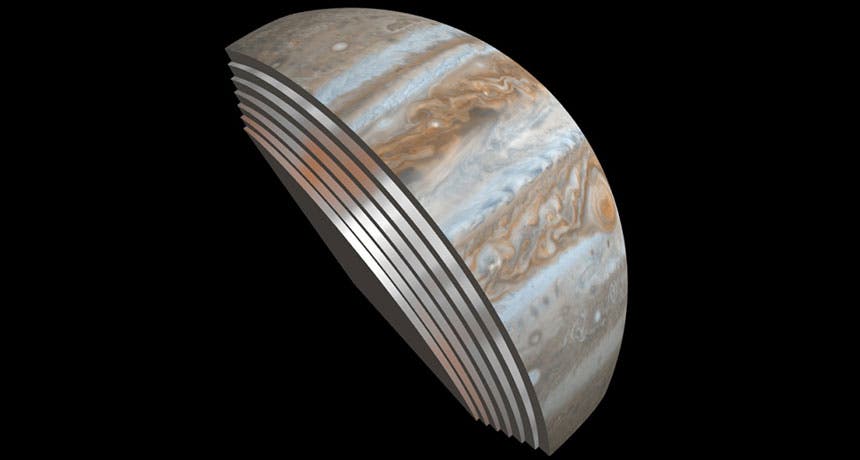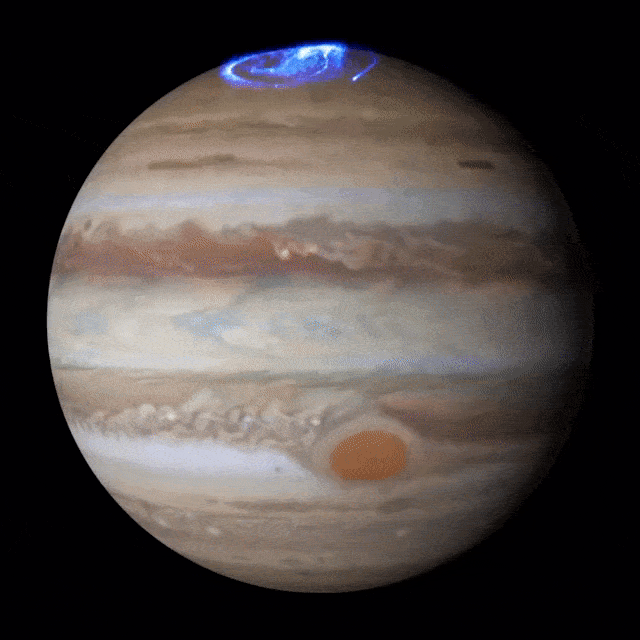
The fifth planet from the sun is famous for its multi-coloured bands that dot its atmosphere, making Jupiter resemble a marble. Until recently, no one was sure whether these stripes are only on the surface, like blemishes, or extended farther inward. Thanks to an unprecedented look inside Jupiter’s atmosphere by the Juno spacecraft, we now know these stripes reach at least 350 to 400 kilometers beneath the outermost halo.
Peeling Jupiter
These remarkable findings were made public last week by Scott Bolton, head of the Juno mission, at the American Astronomical Society’s Division for Planetary Sciences.
It took the Juno spacecraft five years to reach the massive planet, but it eventually entered its orbit on July 4. It soon after turned over a slew of gems like the first ever colour image of Jupiter from orbit, as well as valuable data. For instance, thanks to Juno, we now know why Jupiter’s atmosphere is so hot — because of its famous red spot.
Now, the same Juno probe peered through Jupiter’s clouds, which optical light can’t penetrate. Using microwave instruments that each probe the coloured stripes at different wavelengths, NASA scientists were able to distinguish between the various types of clouds, like peeling back the layers of an onion. The microwave data revealed a striking find: some of these stripes are still visible deep into the cloud.
“The structure of the zones and belts still exists deep down,” Bolton said during a news conference .”So whatever’s making those colors, whatever’s making those stripes, is still existing pretty far down into Jupiter. That came as a surprise to many of the scientists. We didn’t know if this was [just] skin-deep.”
“Deep down, Jupiter is similar but also very different than what we see on the surface,” Bolton added. “We can’t tell what all of it means yet, but it’s telling us hints about the deep dynamics and chemistry of Jupiter’s atmosphere.”
Interestingly enough, the bands from the top clouds are not identical to those seen in the subsequent layers, despite the similarities.
“They’re evolving. They’re not staying the same,” Bolton said. The finding “hints [at] the deep dynamics and the chemistry of Jupiter’s atmosphere. And this is the first time we’ve seen any giant planet atmosphere underneath its layers. So we’re learning about atmospheric dynamics at a very basic level.”
The microwave measurements were made during Juno’s flyby of Jupiter on August 27. The closest encounter between the gas giant and a man-made craft also returned other interesting findings. For instance, by measuring the magnetic field of the planet, NASA scientists found that Jupiter’s beautiful auroras are not unlike the northern and southern lights that flash in the polar skies on Earth — that’s despite that these are 100 times brighter than on Earth and stretch over a huge surface.
There is still much to learn about Jupiter and as long as Juno is still operational, we will learn more. Right now, the probe is on a non-circular orbit which takes 53 days to complete but will soon fire its engine to enter a 14-day orbit.



